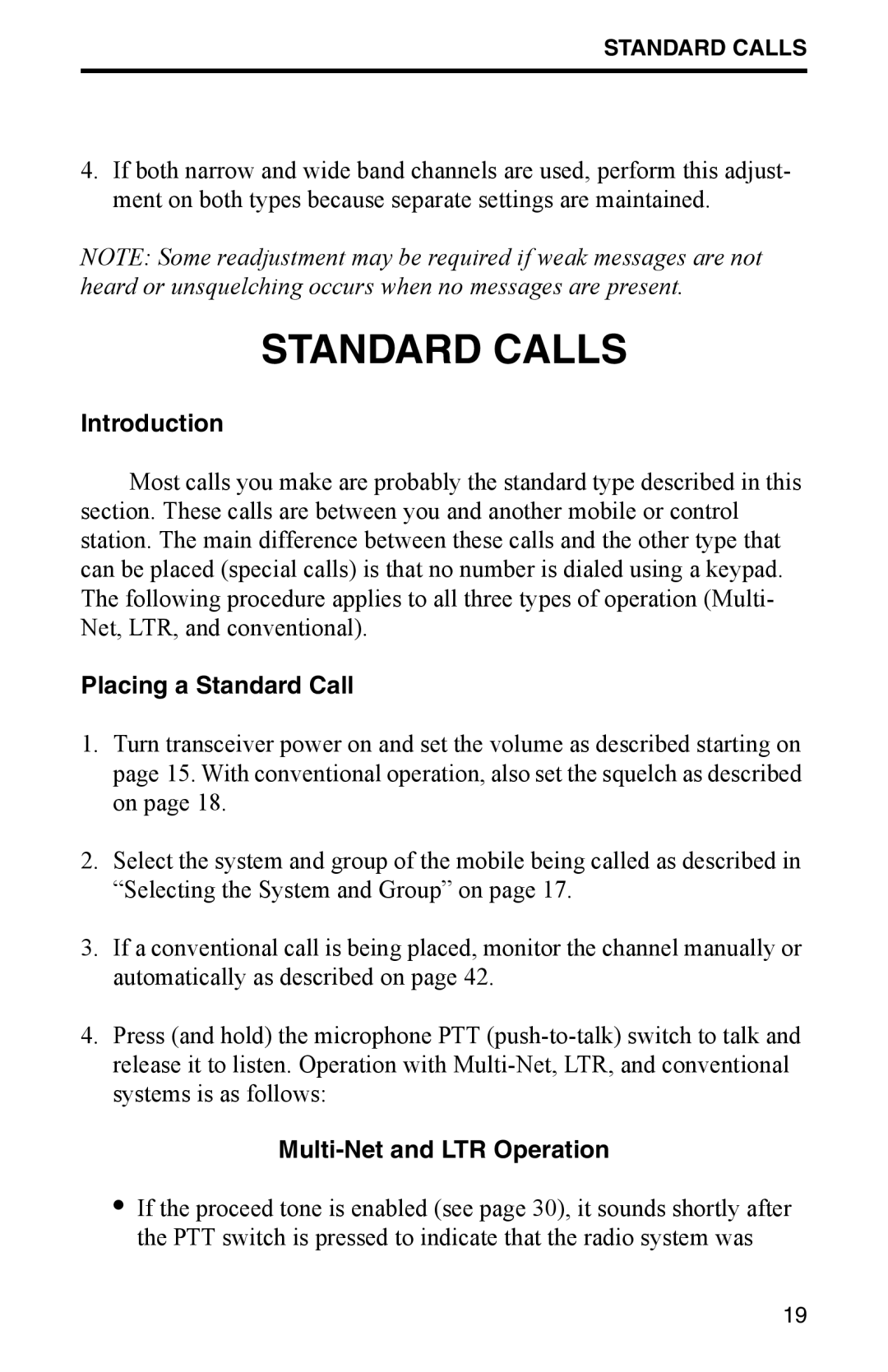STANDARD CALLS
4.If both narrow and wide band channels are used, perform this adjust- ment on both types because separate settings are maintained.
NOTE: Some readjustment may be required if weak messages are not heard or unsquelching occurs when no messages are present.
STANDARD CALLS
Introduction
Most calls you make are probably the standard type described in this section. These calls are between you and another mobile or control station. The main difference between these calls and the other type that can be placed (special calls) is that no number is dialed using a keypad. The following procedure applies to all three types of operation (Multi- Net, LTR, and conventional).
Placing a Standard Call
1.Turn transceiver power on and set the volume as described starting on page 15. With conventional operation, also set the squelch as described on page 18.
2.Select the system and group of the mobile being called as described in “Selecting the System and Group” on page 17.
3.If a conventional call is being placed, monitor the channel manually or automatically as described on page 42.
4.Press (and hold) the microphone PTT
Multi-Net and LTR Operation
•If the proceed tone is enabled (see page 30), it sounds shortly after the PTT switch is pressed to indicate that the radio system was
19
